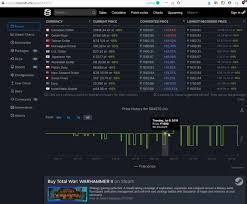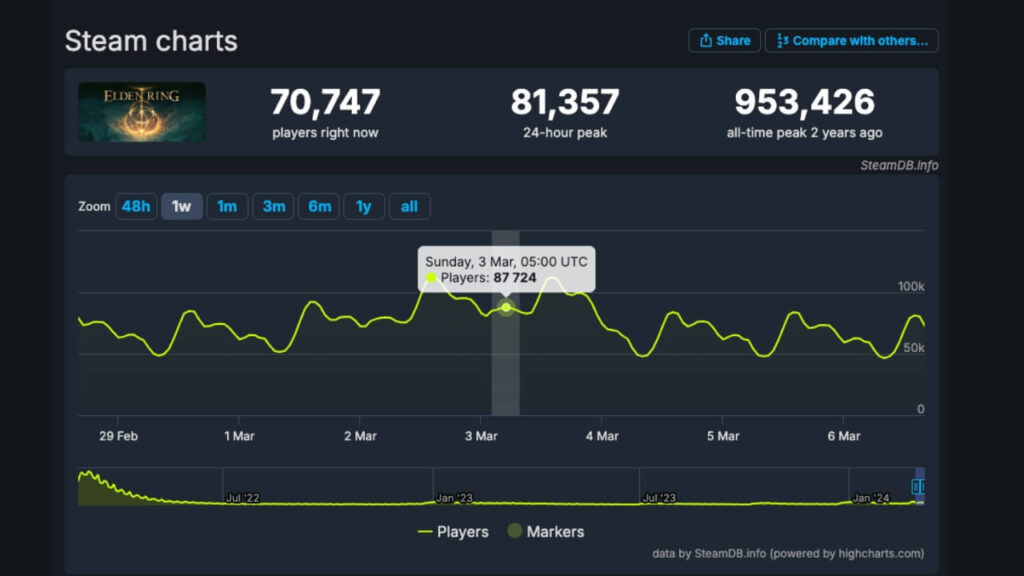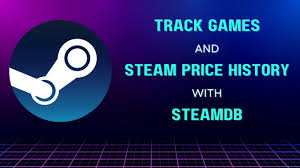Steam price history is a handy tool to see how game prices have changed over time. If you want to buy a game without paying too much, knowing the steam price history can save you a lot of money. Many games go on sale several times a year, and prices can drop a lot during special events like Steam Summer Sale or Winter Sale. By checking the price history, you can understand when a game is cheapest and make a smart choice. Whether it is a big blockbuster or a small indie game, learning the price trends can help you plan your purchases and never miss a good deal. Steam price history also helps gamers compare prices between regions, so you can find the best value for your money without searching everywhere.
Games on Steam often change prices based on popularity, age, or seasonal sales. Steam price history shows exactly how much a game cost in the past, including discounts and bundles. This makes it easier to decide if you should buy now or wait for a lower price. Some websites and tools even track daily price changes and alert you when a game hits your target price. Steam price history is also useful for gamers who want to understand trends in the gaming market. It helps you see which games are trending, which games drop fast in price, and which ones stay expensive for a long time. Knowing this information can save hundreds of dollars over a year if you buy games smartly. Tracking steam price history also makes gift shopping easier because you can buy games at the right time.
Table of Contents
Steam Price History: Track Game Deals and Save Money

Steam price history is a very useful tool for gamers. If you want to buy a game at the best price, checking the steam price history helps a lot. Game prices change all the time on Steam. Sometimes a game is expensive today, but after a sale, it can become very cheap. By looking at the steam price history, you can see how much a game cost in the past. This helps you know if it is the right time to buy or wait for a better deal. You can also use this history to compare prices between different regions or sales events.
Steam price history is not only helpful for saving money. It also helps gamers understand trends. Some games drop in price quickly after release, while others stay high for months. By checking the steam price history, you can see which games are worth waiting for and which ones are worth buying immediately. Many websites now track steam price history automatically and even send alerts when a game hits your target price. This way, you never miss a deal and always buy smartly.
What Is Steam Price History?
Steam price history is a record of how a game’s price has changed over time. Every time a game goes on sale or Steam changes its price, it is recorded in the history. This includes normal prices, discounted prices, bundles, and special promotions. Gamers can use this information to decide the best time to buy.
For example, if a game is usually $60 but dropped to $20 during a summer sale last year, you know it can go that low again. Steam price history shows all this data in graphs or tables. You can see daily, weekly, or monthly price changes. This makes it very easy to understand trends.
How to Check Steam Price History
Checking steam price history is simple. There are websites and tools that track prices for you. Some of the popular ones are:
- SteamDB: Shows detailed price history, including sales and regional prices.
- IsThereAnyDeal: Tracks Steam and other platforms, and sends price alerts.
- GG.deals: Offers historical prices, current deals, and bundles.
To check steam price history, you just need to search for the game on these platforms. You will see graphs showing how the price changed over time. You can also set alerts to know when the game reaches your desired price.
Why Steam Price History Matters

Steam price history is important for every gamer who wants to save money. Games can be expensive, and buying at the wrong time can cost a lot. By tracking prices, you can wait for discounts and buy games for much less. Steam price history also helps with gift buying. You can see when a game will be cheapest before giving it as a present.
Moreover, steam price history gives insight into game popularity. Games that stay expensive for a long time are often new or in high demand. Games that drop fast may not be as popular. This helps gamers decide which games are worth buying now.
Best Times to Buy Games Using Steam Price History
Sales events are the best time to buy games. Steam price history shows patterns of discounts during:
- Summer Sale – Usually in June or July
- Winter Sale – Usually in December
- Autumn Sale – Around November
- Spring Sale – Usually in March
- Halloween Sale – October
By checking steam price history, you can see how much a game drops during these events. Some games may even drop 70% to 90% from the original price. Waiting for these sales based on price history is the smartest way to save money.
How Seasonal Sales Affect Steam Price History
Seasonal sales create predictable patterns in steam price history. If a game goes on sale every year, you can expect it to be cheaper during the next sale. Price history shows these patterns clearly. Gamers can plan their purchases around these sales and avoid paying full price.
Steam also sometimes offers flash sales or weekend deals. Checking the price history of past flash sales can help you guess how low the price can go next time. This is a very useful strategy for gamers on a budget.
Comparing Steam Price History Across Regions
Game prices on Steam can differ by country. Steam price history lets you compare prices across regions. For example, a game may be $60 in the US but cheaper in another country. By tracking price history in different regions, you can find the best deals legally. Some websites allow you to filter by region and see historical trends.
Tools to Track Steam Price History
Many tools make it easy to track steam price history:
- SteamDB: Shows complete price history, including bundles and discounts.
- IsThereAnyDeal: Lets you set alerts and track multiple games.
- GG.deals: Offers comparisons, bundles, and alerts for Steam and other platforms.
- Augmented Steam: Browser extension that adds price history and deal alerts directly to Steam.
These tools make buying games smarter and cheaper. They are easy to use even for beginners.
Tips for Using Steam Price History
- Always check history before buying: Never buy a game at full price without checking its steam price history.
- Set price alerts: Use websites to notify you when the game hits your target price.
- Look at past sales trends: Some games rarely drop in price, while others go on deep discounts frequently.
- Compare regions carefully: Make sure buying from another region is allowed and safe.
- Plan around big sales: Summer, Winter, and Autumn sales are usually the cheapest time to buy.

Conclusion
Steam price history is a powerful tool for every gamer. It helps you save money, plan purchases, and understand price trends. By checking steam price history, you can buy games at the best price and never miss a deal. Using websites and tools that track prices makes this process easy and fast. Whether you are a casual gamer or a collector, knowing steam price history is smart and practical.
FAQs
Q1: What is steam price history?
Steam price history is a record of how a game’s price has changed over time, including discounts, sales, and bundles.
Q2: How can I check the price history of a game?
You can use websites like SteamDB, IsThereAnyDeal, GG.deals, or browser extensions like Augmented Steam.
Q3: Why is steam price history important?
It helps you buy games at the lowest price, plan purchases, and track trends for smart shopping.
Q4: Do game prices vary by region?
Yes, prices can differ by country. Steam price history lets you compare prices across regions.
Q5: When are the best times to buy games on Steam?
Big sales events like Summer Sale, Winter Sale, Autumn Sale, Spring Sale, and Halloween Sale usually offer the biggest discounts.
Q6: Can I get alerts when a game price drops?
Yes, many tools and websites allow you to set alerts for specific prices or discounts.

